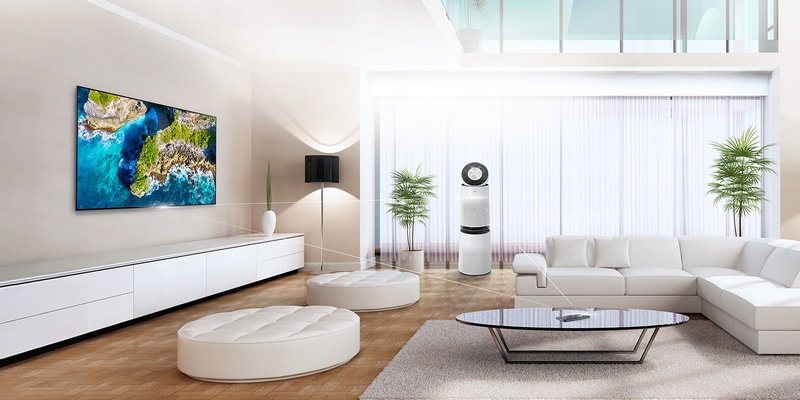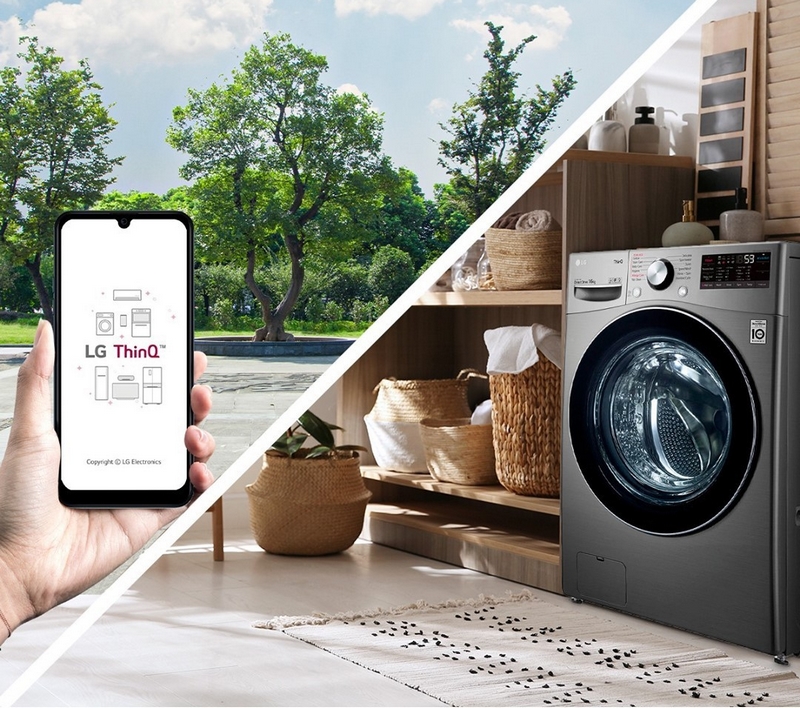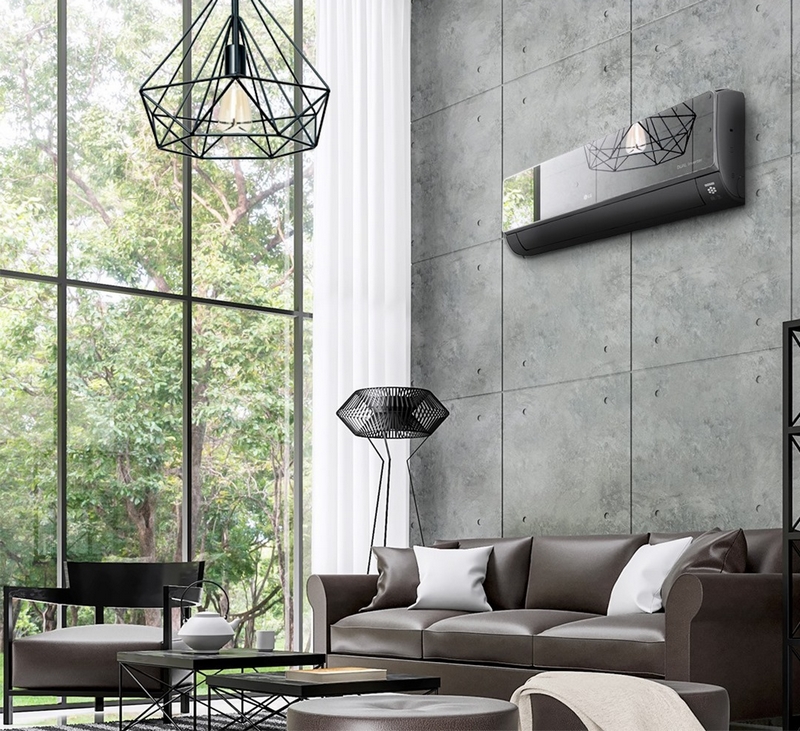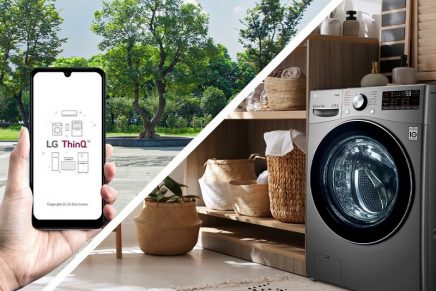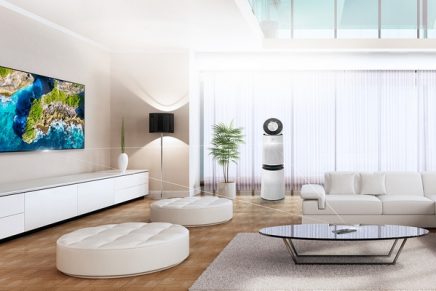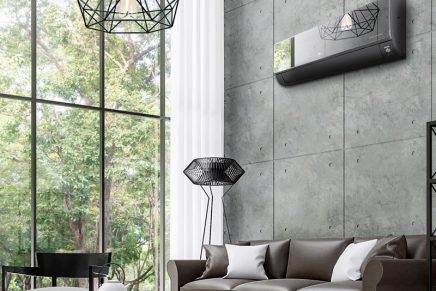Smart home technologies are narrowing the digital divide for older, less tech-savvy consumers, according to fresh consumer research that provides an in-depth analysis of the habits and lifestyles of U.S. smart home users. While most research on the topic has focused on the technology, this new study – the 2021 LG ThinQ Smart Home Report – reveals unique findings about how smart technology is transforming users’ daily routines across ages and regardless of technological acumen for the better.
The study, commissioned by smart home technology leader LG Electronics, discovered that users who were less tech-savvy were more satisfied with their smart homes and twice as many users between 50-54 years of age (60.0%) saying they were “very satisfied” with their smart homes and products than the 25-29 age group. The findings revealed that smart homes can be enjoyed by everyone regardless of tech fluency or age, and they can play an important role in narrowing the digital divide by providing all consumers with greater access to easy-to-use solutions.
While smart homes are designed to be universally beneficial, the benefits can be completely unique to every individual. Through in-depth
discussions with a wide variety of smart homeowners, the report details how smart spaces are providing flexible solutions that adapt to distinctive lifestyles based on users’ key values, interests and hobbies. For example, respondents aiming for high social status are the only group to place the smart washer’s identifying the fabric and recommending the best course function in their top 3 most-used features. This feature is useful for socially active people who want to show their friends something new. When it comes to leisure time, respondents with a passion for gardening placed the remote control/voice command function of smart TVs, refrigerators, and washing machines that provide hands-free home control even in the garden as the top 3 most-used features.
Among smart home benefits, saving energy was mentioned most frequently by the respondents.
Through energy optimization features found in today’s newest connected products, smart homes bring a more sustainable way of living to consumers while keeping their energy bills low. These interesting findings show that the smart home can become an important auxiliary means of eco-life.
“The homes of the future will be flexible living spaces that provide solutions adapted to each individual’s unique lifestyle,” said Lee Jeong-seok, LG Electronics senior vice president and head of LG’s Global Marketing Center. “LG ThinQ presents the vision of a better, more intelligent way of living by delivering AI solutions that allow next-level home automation and connectivity. At LG, we believe in bettering the lives of consumers in every aspect, and LG ThinQ will be key to making all this possible.”
Parks Associates released new research ahead of CONNECTIONS: The Premier Connected Home Conference virtual session, showing that 36% of US broadband households now own a smart home device, an increase of 2% over Q4 2020.
“The residential security industry continues to experience a blurring of lines between professional and DIY solutions,” said Elizabeth Parks, President, Parks Associates. “Professional monitoring providers, like ADT, Brinks, and Comcast, have added self-monitoring options, while companies that started in the DIY space now offer professional monitoring. We expect more innovation, especially in AI and video analytics, as companies attempt to find a winning business model to increase monthly monitoring subscribers for security and smart home services.”
“Even when the modern security consumer’s home is professionally monitored, they still want to self-monitor to a degree,” said Logan Dunn, Head of Growth, Wyze. “They want to SEE what is happening in their homes. They want to verify any abnormalities themselves. This is a current trend, and one that has legs to keep going. Smart home camera penetration in the US market is still low. I imagine that much of the upcoming innovations to the security industry will revolve around video.”
“Despite pandemic-related restrictions, our efforts helped ensure solid growth and achieved impressive customer retention,” said Min Kang, Chief Product Officer, Brinks Home. “As our customer needs to diversify and more customers look for customized solutions with flexibility, we strive to transform our business and technology to accommodate or exceed these expectations, enabling us to accelerate our growth further.”
“The smart home security market is passing exciting milestones. Parks Associates and their annual CONNECTIONS conference are greatly contributing in shaping the future of our industry by cultivating a platform that connects people and shares insights from key industry players,” said Andreas Rudyk, Co-Founder, Smartfrog & Canary.
“The keys to the industry reaching its full potential are focusing on the customer experience and driving value,” said Don Young, EVP and COO, ADT. “This means making it easier to harmonize the many single-point devices into a single smart home ecosystem. It means using sensors and data to make security become more predictive and more proactive. And it means extending security beyond the home to vehicles and personal mobile devices. All of these add value and relevance to the underlying security relationship with the customer and, when done correctly, increase the convenience of feeling protected.”

